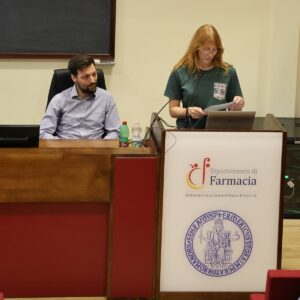Welcome to the first episode of In Vitro Focus, a series of in-depth articles written by our technical staff to bring you to the heart of the world of cruelty-free testing.
Together we’ll discover all the best practices, latest news, and key players in the industry that is striving to make animal testing a thing of the past.
Russell & Burch
In 1959, British academics W.M.S. Russell and R.L. Burch, members of the Universities Federation of Animal Welfare, published “The Principles of Humane Experimental Technique.“
They proposed a principle, or model, for amore ethical animal experimentation and able to minimize the suffering caused to laboratory animals.
The main goal of applied animal experimentation has always been to use the animal as a model to better understand a certain biological characteristic of another species, usually the human species.
With their work, Russell and Burch incorporated a new goal: that of promoting responsible experimentation.
Moreover, Russel and Burch’s principles were not presented as the final word on this science but as a basis for itsfuture developments:
The three precise methodological and ethical concepts in the use of animals in experiments, namely the 3Rs (Replacement, Reduction & Refinement), were presented not only to assist researchers in finding and using the techniques currently available but also to encourage the development of tools and methodologies still unknown.
In today’s scenario, this mission is increasingly relevant: the international scientific community is constantly looking for new alternative methods to be adopted in order to reduce the use of animals, to replace them completely in experimentation, or to limit their suffering.
The 3 Rs
So what do the 3 R’s consist of?
The researcher should initially attempt, with as much effort as possible, to replace, or substitute, their animal model with an alternative model (Replacement);
if this is not possible the second step is to try to reduce as much as possible the number of animals used in a certain experimental protocol while maintaining the same level of information (Reduction);
finally, with the last R, the investigator must always strive to reduce the level of suffering imposed on animals during experimental procedures by actively improving the quality of the entire life span of the animal (Refinement).
The 3 Rs today
For years, the 3 R’s have appeared in virtually every context related to the use of animals in research: laws, regulations, and government policies; ethical statements of professional research organizations; books and journal articles.
The principles proposed by Russel and Burch are the basis of theDirective on the protection of animals used for scientific purposes 2010/63/EU, which became law on 22/09/2010, in which the reference to alternative methods and the principles of replacement, reduction and refinement is present throughout the text of the law.
This directive was transposed in Italy with the D.LGS. of the 4th of March 2014, n. 26.
However, the principles of replacement, reduction, and refinement are constantly evolving, and departing from the original definitions of the Principles would not be inappropriate – and indeed would be advisable – if the changes represent improvements.
So let’s take a look at what the3Rs mean today and how their definition has changed since the days of Russell and Burch.
Replacement
Sostituzione (anche parziale) della sperimentazione animale con metodi alternativi di equiparabile validità.
In the original meaning of the term, the one proposed by Russell and Burch, it meant the use of non-sentient material (plants, microorganisms, nonliving chemical and physical systems) in place of the animal model.
Currently, alternative methods to the animal model include computational models, cellular models (also called in vitro models), organoids, engineered tissues and human volunteer studies, three-dimensional models, and virtual reality systems.
Already Russell and Burch introduced the concepts of partial replacement (relative replacement) if an animal species is replaced by another species characterized by a relatively less complex nervous system than the original and complete replacement (absolute replacement) if the animal model is completely eliminated from the experimental protocol.
Reduction
Reduction in the number of animals used, such that a statistically significantamount of data with sufficient precision is still obtained.
In this type of approach, proper use of statistics and careful experimental design to determine the minimum necessary number of subjects to be used is of paramount importance.
Another way to generally reduce the number of experimental subjects used by different laboratories should be to harmonize as much as possible, and internationally, the standard protocols required for toxicity testing. This would significantly reduce the need to repeat the same tests in different countries, automatically lowering the number of animals used in experimentation.
The concept of reduction can be applied on several levels:
- an intra-experimental level where the reduction concerns the number of animals within each individual experiment.
In this case, a reduction can be made by improving the statistical design, performing pilot studies, and, by analyzing previously obtained data, calculating the number of subjects strictly necessary.
This type of analysis should be conducted for each individual experiment you want to perform.
- A supra-experimental level where reduction is implemented by changing the more general way of doing research.
This level also includes the action of ethics committees, the possibility of exchanging information between different research groups, and the optimization of breeding programs.
An example of application of the principle of reduction can be the choice to reduce the number of animals kept in the farm avoiding the continuous breeding of colonies of e.g. mice not necessary for experimentation.
Another example of the principle of reduction may be the possibility of obtaining, through consultation of special databases, frozen tissues made available by other research groups, thus avoiding the sacrifice of additional animals.
- An extra-experimental level where reduction is achieved through an evolution of experimental practice.
An example may be the harmonization of national rules on animal testing between European countries, the United States and Japan.
Refinement
Refinement of experimental designs and conditions to minimize the suffering caused to the animal and decrease its stress.
This action begins when every effort has been made to find alternatives to the originally chosen animal model and to reduce the number of individuals used in a specific experimental design. The concept of refining, or improving, experimental procedures has changed over time.
One of the conclusions of recent research has been the redefinition of this particular concept, including all aspects that may be affected by the application of this R: transport, housing, techniques used in the procedures of the experimental protocol, euthanasia.
Each stage of research involving animals is designed to safeguard animal welfare as much as possible, minimize the use of invasive or painful procedures, and anesthetics and analgesics are used whenever possible.
In this proposal, the necessary and active effort to improve the welfare status of the experimental animal, beyond a simple minimization of the state of discomfort, appears particularly relevant.
The use of the positive reinforcement, for example, is a good way to improve experimental procedures. In this case, in fact, the animals are given the opportunity to cooperate with the procedures, through the administration of rewards, usually food, thus reducing the cases in which the animal must be forced to participate in a certain experimental protocol.
In addition, an important principle that researchers are obliged to follow concerns the choice of animal species to be used in research. In fact, the law prescribes that with equal possible results, the species with less encephalization, with less neurological development, should be chosen.





